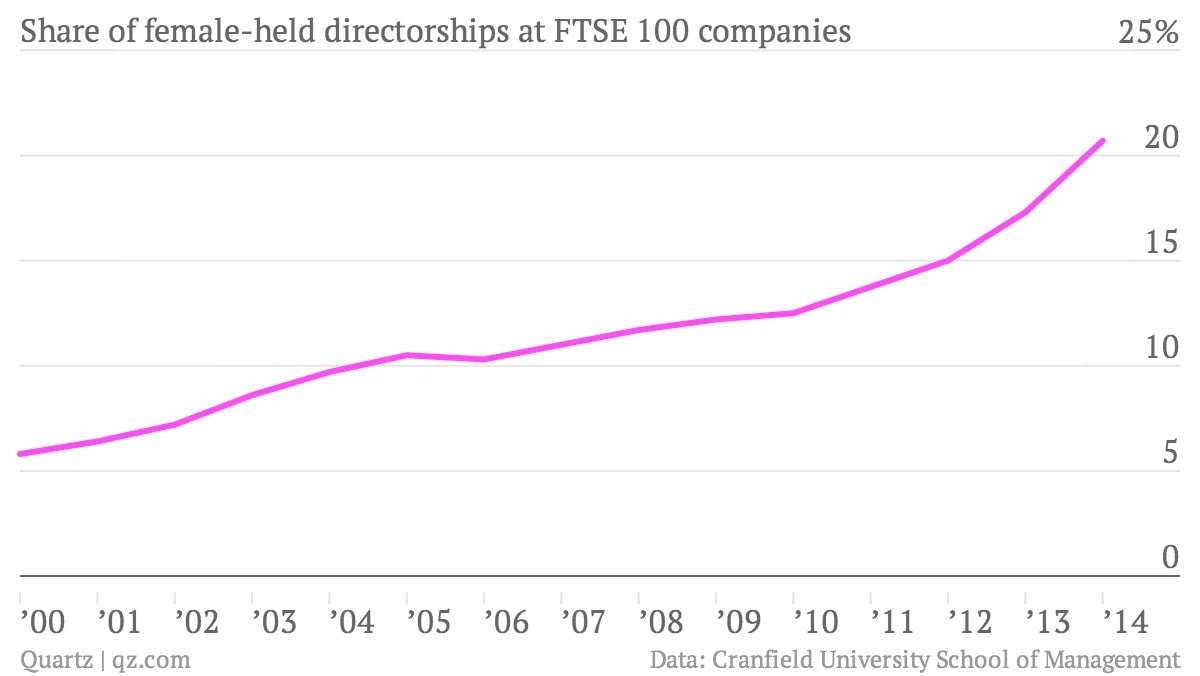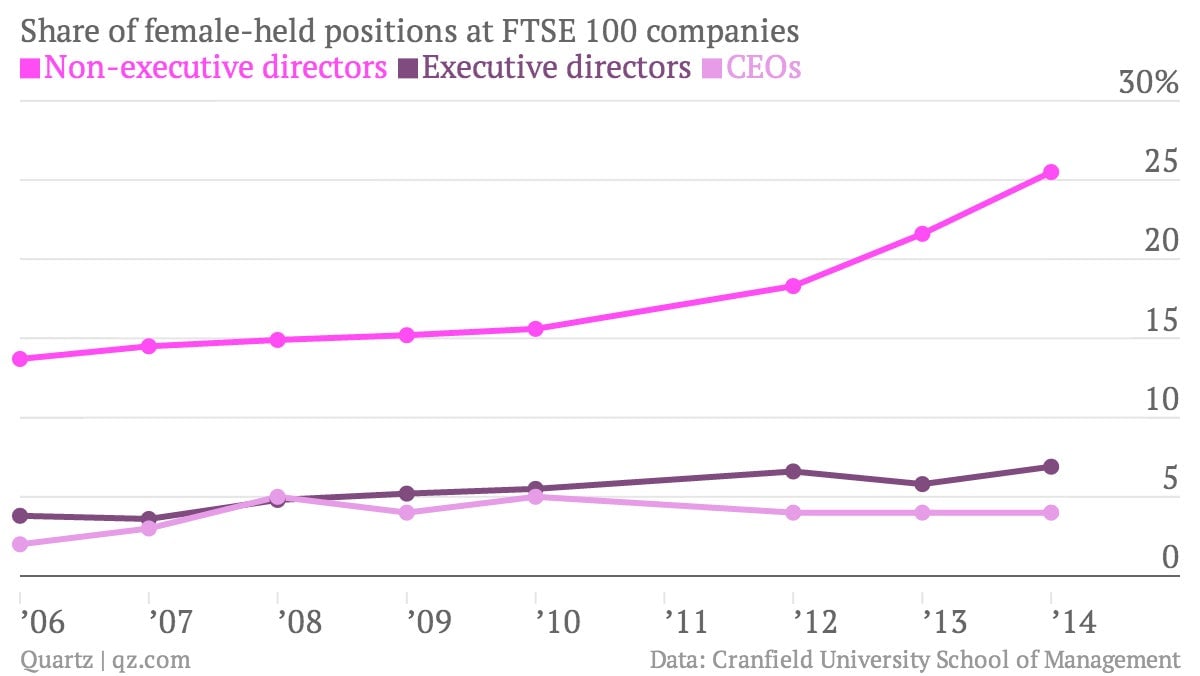More female directors are advising companies, but few female executives are running them
One in five board members at the UK’s 100 largest listed companies are women. This is “impressive” progress, according to a report published today by the British government. The share of female directors has roughly doubled over the past few years, spurred by a 2011 voluntary pledge by companies for women to hold 25% of board seats by 2015.


One in five board members at the UK’s 100 largest listed companies are women. This is “impressive” progress, according to a report published today by the British government. The share of female directors has roughly doubled over the past few years, spurred by a 2011 voluntary pledge by companies for women to hold 25% of board seats by 2015.

British officials are keen to avoid a hard quota on female board representation, like there is in Belgium, Iceland, Italy, France, the Netherlands, Norway, and Spain. The EU is also mulling a quota for all 28 member states, calling for women to comprise at least 40% of corporate directors by 2020, in line with most of the countries with quotas already in force.
Although some executives and officials speak out against gender quotas, most claim that they’re not content with the gender-balance status quo. Studies generally show that more diverse boards boost corporate performance.
But while the experience and perspectives that women bring to male-dominated boardrooms is welcome, it’s mostly left to men to translate that advice into day-to-day action as members of the top executive team. It’s striking to note how the rise in female executives lags the rise in female directors. A quarter of non-executive directors at big British companies are women, but only 7% of executive directors, and a mere 4% of chief executives, are female.

A similar pattern plays out around the world. Addressing the British numbers, UK business secretary Vince Cable said that “more needs to be done” to boost the ranks of female executives. “These will be the CEOs of tomorrow, and businesses still aren’t tapping into the vast talent pool available to them,” he said.
Fairness isn’t the only reason to heed this advice. Research suggests that companies run by female chief executives are particularly innovative, which could be an incentive for boards to cast the net wider when they consider CEO succession plans.
The UK report notes a “particularly encouraging” relationship between gender diversity on boards and women in executive roles, but the numbers show that this link isn’t particularly strong. There may be more women than ever in the boardroom, but there remain very few female faces in the executive suite.